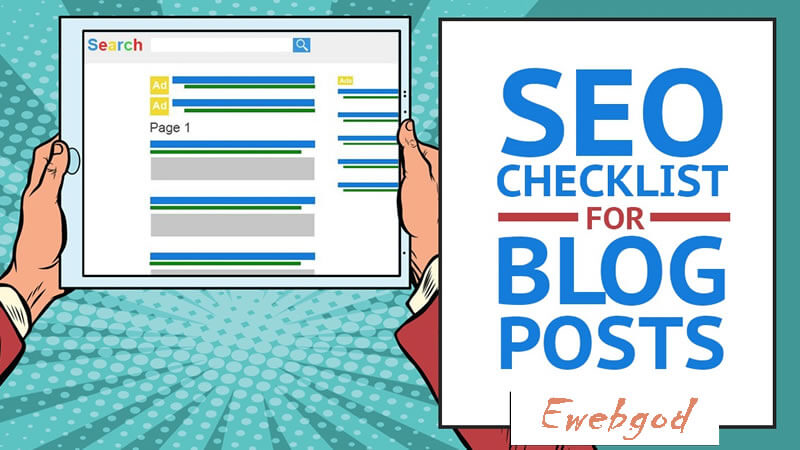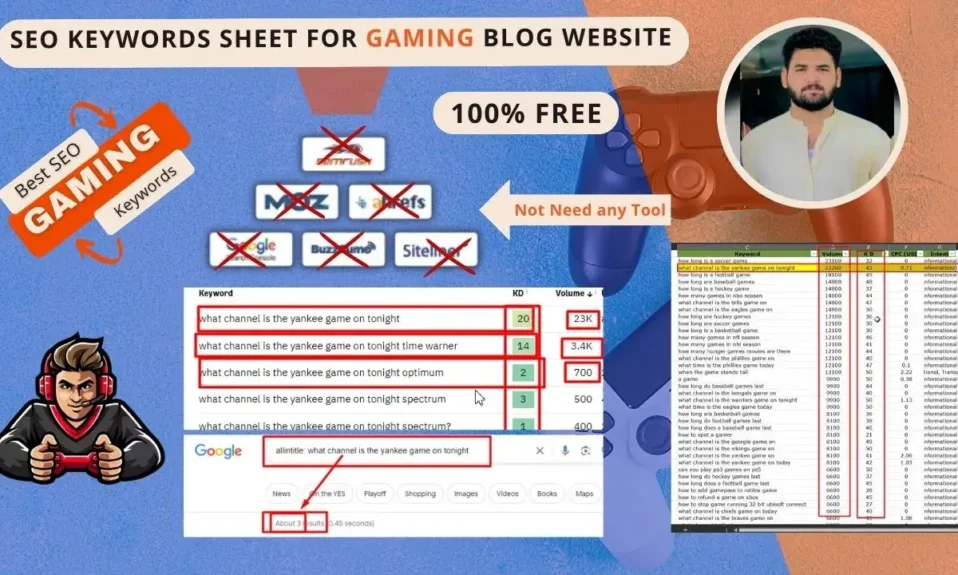
Writing a blog post is a skill like any other form of writing. Consider arranging your material and writing in an engaging manner to maintain your audience’s interest. By giving headings, subheadings, and clear paragraphs, you may aid your viewers in grasping the core idea of your piece. People are likelier to share, like, tweet, and link to your piece if they can comprehend and like your writing. That will improve your ranks! Therefore, to boost your Google ranking, you need to maximize your writing abilities!
SEO is search engine optimization for increasing traffic and ranks.
For some, writing for SEO purposes and writing to attract and retain your audience may appear to be mutually exclusive objectives. I can’t entirely agree. Indeed, if you want a fantastic and SEO-friendly blog post, the phrases you want to be discovered should be in a prominent location. However, excessive keyword usage significantly detracts from the text’s readability. Execute an effective SEO strategy to boost your rankings. Blogging is such a potent SEO tool to increase your organic traffic. Therefore, you should not perform that action!
In this piece, I’d like to offer some advice on how to write blog posts that are both highly readable and SEO-friendly. I firmly believe that these two objectives should (and should easily!) coexist.

Simple composting guidelines for blog entries. Digital marketing includes search engine optimization. Your blog entry must be a well-written piece before anything else! When posting a new blog post, many bloggers begin writing. They type whatever occurs to them. For those with innate writing abilities, this may be adequate. Some may require assistance. I always abide by the following “rules.”
1. Before you write, think!
Consider your text’s intended meaning carefully. What would you like your readers to know? And what purpose does your text serve? At the bottom of the page, what do you want your audience to do? Before beginning to write, record the responses to these questions.
- SEMrush helps you discover more keywords.
- Optimizing your Meta description and title tag help with searches and social media.
- Regularly add new stuff.
- Optimize blog posts with relevant keywords to increase your ranking on search engines.
- The website should be mobile-friendly.
- Make sure that the article is searchable on the search engine results page.
- Maximize your keyword research to optimize your blog posts.
2. Document the structure of your blog entry.
Create a structure for your content before writing it. Every post should contain an introduction (in which you introduce the topic), a body (in which the primary message is written), and a conclusion (which should summarize the most important ideas or deduce some new idea). In each of these three sections, jot down your intended text. You now have an overview of your article. The writing proper can now begin!
3. Use paragraphs.
Everyone utilizes paragraphs; however, employing sections that make sense is vital. Visuals, such as graphics, photographs, and videos, are an excellent way to break up paragraphs. Do not start a new sentence on a new line just because it looks great. There must be a justification for beginning a new paragraph. Each paragraph must have a central topic or theme. Consider the main thought of each section. You should be able to comprehend this idea’s essence in a single line. Add new paragraphs if you need more sentences!
4. Employ headings
You should utilize headers since they structure the entire page. They are essential for both readability and SEO. Headings aid Google in identifying the primary subjects of a lengthy article and, thus, can boost your rating. Utilize subheadings if you want readers to navigate your articles easily. Subheadings will guide readers, make it easier for them to skim your page, and clarify the structure of your articles. Ensure that you employ your keywords in specific subheadings. However, not in each instance, as it would render the text unintelligible. Avoid keyword stuffing
6. Utilize signaling phrases.
The use of signal words facilitates reading and comprehension of the core topic. Suppose, for example, that there are three reasons why customers should purchase your goods. You should employ signal words such as “to begin with,” “next,” and “last.” In addition, ‘nevertheless,’ ‘certainly,’ and ‘indeed’ provide a clear signal to your readers. Afterwards, such as ‘consequently,” so,’ or ‘for this reason,’ readers will immediately realize that a conclusion will follow. To effectively organize your material, signal words are crucial.
Allow other individuals to view your post. Allow someone else to view your post before publishing it. Inquire whether he comprehends the post’s fundamental premise: correct misspellings and improperly constructed sentences.
7. Optimize the word count of your content.
Ensure that your articles are at least 300 words in length. Google prefers lengthy posts, but if your article is excessively protracted, it may deter readers. Therefore, aim for a word count of approximately 700. And, as a general rule, seek to include your search terms in 1 to 2 per cent of the text. Therefore, in a 300-word piece, your search phrases should appear between three and six times. Keyword density optimization. Evaluate on-page optimization
8. Link to the previous section.
If you have previously written content on the subject of your recent piece, don’t forget to link to it. Your message will be more persuasive if you demonstrate subject matter expertise. In addition, Google’s ranking also depends on the link structure of your website. Here is a fascinating case study I did for The Butter End Cakery if you want to learn more about this.
Creating exceptional, relevant, SEO-friendly blog posts is the best strategy to gain inbound links.
9. Attract the attention of search engines to crawl your web pages.
Google will perceive that your website is active if it contains factual and functional information. Google will crawl the site less frequently if it is inactive, and it may become less desirable for Google to include the page in its search results. Improve your ranks for the long term by optimizing your SEO approach.
- Search rankings using SEO tools help me with link building.
- Helping your site rank in google search results contains a good balance of organic search.
- Verify your site with google search console to determine which keywords are already achieving.
10. Utilize your plugin for Yoast SEO.
The Yoast SEO plugin facilitates the creation of SEO-friendly blog posts. You begin by deciding on a focus keyword. This is the essential search keyword for which you want people to discover this page. The plugin examines your post to see if you’ve used the target keyword in the proper context and analyze various other textual elements. The following are the most crucial:

- The plugin lets you compose a Meta description.
- The plugin examines the text that you compose. It determines the article’s readability by calculating a Flesh reading ease score.
- It verifies whether your term appears in five crucial locations: the article’s heading, title, URL, body, and meta-description.
- The plugin also examines the existence of images and links in your article.
- It determines the article’s word count and keyword density.
- Bloggers who have been blogging to promote blogs and allow organic traffic to increase organic traffic.
- Maximize your content marketing to drive traffic and generate leads.
- It helps you dominate organic search results
- Rank any blog on the first page of the google search result with some keywords.
- Create a comprehensive XML sitemap link under the Yoast.
- In addition, the plugin examines whether other pages on your website employ the same emphasis keyword, preventing you from competing against yourself.
- Writing a friendly blog post requires Meta description and the usage of proper keywords.
If you have written a blog post that is a relatively SEO-friendly blog post (considering the previously listed factors), the plugin will signal this with a green bullet. Writing web pages using green pellets will help increase the ranking of your website’s pages.
Conclusion:
SEO is search engine optimization for increasing traffic and ranks. To boost your Google ranking, you need to maximize your writing abilities. Excessive keyword usage significantly detracts from the text’s readability. Consider arranging your material and writing in an engaging manner to maintain your audience’s interest. Use these tips to ensure that your articles are readable and SEO-friendly. Headings aid Google in identifying the primary subjects of a lengthy report and, thus, can boost your rating. Use signal words such as to begin with next and last to effectively organize your material. SEO-friendly blog posts require a Meta description and proper keywords. The plugin determines the article’s readability by calculating a Flesh reading ease score. It verifies whether your term appears in the page’s key locations: heading, title, URL, body, and meta-description.









5 Comments